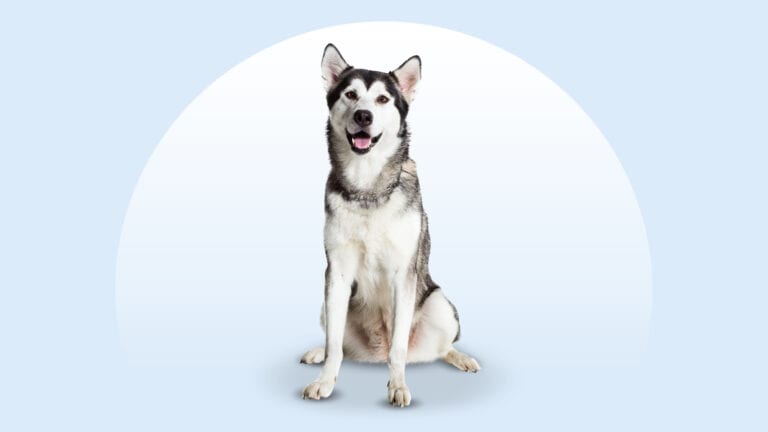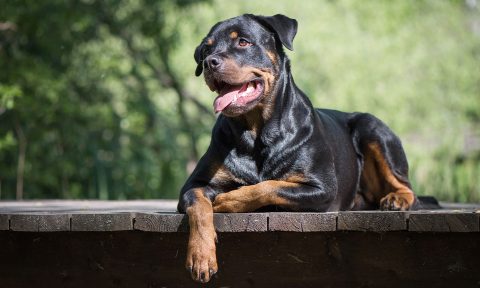Rottweiler vs Alaskan Malamute

Breed Snapshot
Best For
A popular working breed, Rottweilers do best with experienced pet parents who can provide early training and socialization. These robust, large-sized dogs thrive in homes with active individuals or families, appreciating both mental and physical...
A popular working breed, Rottweilers do best with experienced pet parents who can provide early training and socialization. These robust, large-sized dogs thrive in homes with active individuals or families, appreciating both mental and physical challenges.
Rottweiler Temperament
Rottweilers are powerful and intelligent dogs who benefit from early training and socialization. They are easy to train and eager to please their families, but are also strong-willed and may seem aloof to the outside world. Originally descending from the mastiffs of the Roman legions, Rottweilers have been valuable...
Rottweilers are powerful and intelligent dogs who benefit from early training and socialization. They are easy to train and eager to please their families, but are also strong-willed and may seem aloof to the outside world.
Originally descending from the mastiffs of the Roman legions, Rottweilers have been valuable companion animals and working dogs for centuries. This is just as true today as it was years ago—families that are willing to put in the time to train and socialize their Rottweiler will be rewarded with an intensely loyal and energetic dog.
In fact, Rottweilers are much more emotionally needy than many people assume. This dog has a fearsome reputation, but in reality, Rottweilers are obsessed with their people and want to be around them all the time. Rottweilers who are isolated from people or kept alone may begin to exhibit unwanted behaviors when they do finally get access to people.
Rottweilers were originally bred to be protectors. Combined with their great strength, this makes it especially important that Rottweilers are properly trained and socialized. Once socialized, Rottweilers can easily get along with other dogs and young children. Like any dog, Rottweilers who are poorly trained, subjected to harsh discipline, or isolated are more likely to exhibit unwanted fear-based behaviors, including biting and aggression.
One especially interesting features of these dogs is their vocalization. Rottweilers aren’t known for excessive barking (although of course they can and will bark), but they do have a deep rumble that sounds almost like a growl. Some pet parents think of this rumbling sound as “talking.” This “Rottie rumbling” is almost like the purring of a giant cat and often means your Rottweiler is happy and content, particularly during belly rubs.
Rottweiler Traits

Breed Snapshot
Best For
Alaskan Malamutes live for outdoor adventures and are devoted to their family. Strong and affectionate, they make excellent companions for those seeking an active pup who loves to play.
Alaskan Malamute Temperament
Alaskan Malamute dogs thrive on human attention and are happy to welcome a crowd to your house. They don’t play favorites with family members, either—they’re equal-opportunity snugglers. They’re not barkers, but they are chatty—yelps, howls and “woo woos” are all found in their repertoire, so...
Alaskan Malamute dogs thrive on human attention and are happy to welcome a crowd to your house. They don’t play favorites with family members, either—they’re equal-opportunity snugglers. They’re not barkers, but they are chatty—yelps, howls and “woo woos” are all found in their repertoire, so expect them to join in on the conversation.
Goofy dogs with a lovable personality, Mals are also great with kids and babies, although they’ll need to be supervised around small children. They’re big dogs, so they might accidentally knock a child over, and if they nip, they could cause injury. (They do have a strong bite force.)
While Alaskan Malamutes are not aggressive toward people, they can be strong-willed. Plus, this breed has a high prey drive and may not respond well to other dogs if not properly socialized and trained. They also have a penchant for taking off after critters or cats, so think twice about off-leash adventures. For these reasons, it’s best to train your pup from the get-go.
These athletic dogs are always up for outdoor playtime, especially if you give them a job. If you don’t have a sled, this working dog breed is just as willing to pull you on a bike. Or just strap a backpack on your Mal and go hiking.
Savvy problem-solvers, Malamutes are capable of finding new ways to dig under the fence or chew up the furniture unless you keep them challenged. Games of hide-and-seek and teaching them cool tricks are all good ways to exercise their brains. So are dog sports like agility, rally and bikejoring (a sport created to help keep sled dogs in shape in off-winter months).




